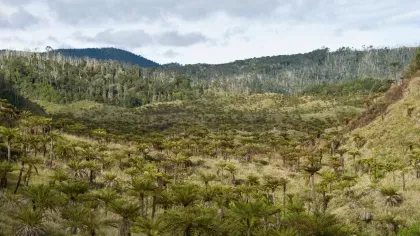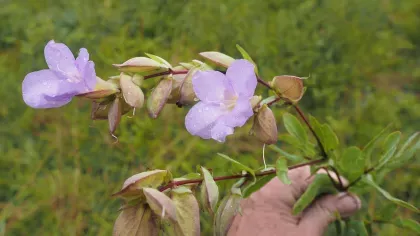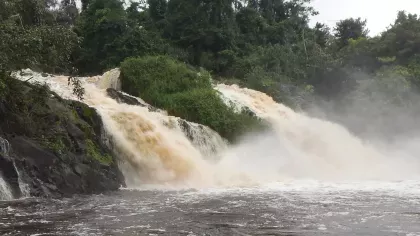14 January 2022
Patching up the Chocó Forests
Discover the Chocó forests of Ecuador, some of the most threatened tropical forests in the world.

The Pacific rainforest in Ecuador is part of the Chocó forests and biodiversity hotspot spanning Pacific Panama, Colombia and Ecuador.
They are some of the of the world’s most threatened tropical forests.
These are also extraordinarily diverse forests with an unusually high number of plant and animal species found nowhere else in the world.
In fact, the Chocó forests have more plant species than anywhere else in the Americas.
Sadly, in Ecuador, just 2% of the original forest is left intact.
Large areas have been logged or cleared for oil palm plantations.
However, hope is on the horizon for this biodiversity hotspot as significant efforts are underway to patch up the fragmented forests and conserve the unique flora and fauna.
Fundación Jocotoco, an Ecuadorian non-governmental organisation have, with the support of international organisations such as Rainforest Trust and World Land Trust, been leading an extensive campaign to raise enough funds to purchase and protect 57,000 acres of forest.
The plan is to connect the Canandé Reserve with two government reserves to create a natural corridor.
Canandé Reserve
The Canandé Reserve was established in 2000 with the aim of protecting the biodiversity of the Chocó hotspot.
The reserve is highly protected with the world’s first acoustic monitoring system, developed by NGO Rainforest Connection, which can detect the sounds of chainsaws and trucks and send an alert to park guards.
It also listens out for the sounds of endangered species such as the Brown-headed monkey.
Kew began working in the Canandé reserve with Ecuadorian Amazonian State University (UEAE) and the Fundación Jocotoco in 2015.
Since then, we have recorded 320 plant species, 27 of which of which are endemic and over half of these are either Endangered or Critically Endangered.
For example, Magnolia canandeana, is a 30-metre tall magnolia found new-to-science in 2013 and only known from under ten individuals.
Other plants include a Critically Endangered Lily (Eucharis astrophiala), a Liparis Orchid, and a palm species (Geonoma tenuissima).


The almost-lost legume
Amongst these endemic and critically endangered species is also Ecuadendron acosta-solisianum, a monospecific legume tree, meaning it’s the only species in its genus.
Ecuadendron, which grows up to 15 metres tall, was identified in 1998 from a few individuals in some of the southern Chocó forests in Ecuador and named new-to-science.
Its wood is widely used in this area, which has led the species to its demise.
It was feared extinct. However, while on the first expedition with UEAE, we came across a large population of the species in the Canandé Reserve.



This population is likely the last remaining of the species and may also represent the last chance to guarantee its survival.
This Ecuadendron patch now serves as a study site for pollination issues, dispersal mechanisms, and germination and regeneration studies that will allow local environmental authorities to take measures to conserve this iconic species.
Currently, Canandé Reserve staff are collecting seeds of the species and have constructed a nursery where they are producing seedlings for planting in different areas of the reserve.
Interestingly, the closest relative of the Ecuadendron tree is another monospecific tree, Brachycylix vagleri, only known from a few individuals the northern Chocó region of Colombia.
Kew scientist, Rowan Schley, showed in his evolutionary study that the common ancestor of the two trees grew in the north-western South America about 27 million years ago.
Reptilian-patterned plant
Draconthium croatii is another highly threatened species, which is endemic to north western Ecuador.
It belongs to the cheese plant family (Araceae), and vegetatively, it shares a great similarity with species in the Amorphophallus genus, for example, Amorphophallus titanum (titan arum), which is found in Kew's Princess of Wales Conservatory and also known as the 'corpse flower' due to its rotting flesh scent.
Plants in both genera usually consist of a single leaf arising from an underground tuber with a mottled, reptilian-patterned petiole.
The petiole can grow up to several meters long with a highly divided, and compound, spreading blade which reaches as much as three meters or more in diameter.
Just like titan arum, Drancontium species produce a putrid scent when it flowers to attract pollinators.
However, Drancontium differs sharply from Amorphophallus in having bisexual flowers.


There is is still so much more to uncover in these forests and as we connect the fragments, each species stands a far greater chance of protection.



